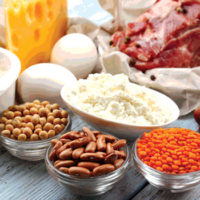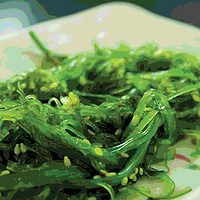Choosing a reputable ingredient supplier is no small task. The safety and quality of the final food product is ultimately dependent on not only the ingredients themselves but also on the best practices of the supplier. Sourcing ingredients, therefore, is a multi-step course. Let’s take the following scenario as an example of how the process works, in principle.
It’s Friday afternoon on a cool October day, and your best customer calls in a request for a hot new idea. Their marketing team wants to pursue a seafood offer for next year’s Lenten promotion. They want a ready-to-eat, heat-and-serve, Louisiana-style crawfish etouffee. They also tell you that they have a budget to meet, but they want this product to be great-tasting. “We want to see samples next week,” was the last request from the customer before the phone call ended.
Your product development team formulates a recipe and begins to gather the ingredients that are needed from their stock of currently approved suppliers. They have all of the items they need, except for the main ingredient—peeled crawfish tails. After the team decides what major characteristics they want in crawfish tails (i.e., size, flavor and storage conditions), the purchasing team is then tasked to obtain them quickly.
Purchasing will need to do some research to find suppliers of crawfish. They must consult several resources: current suppliers, trade show contacts, Food Master, seafood promotion boards and the Internet are good examples. A few more decisions are required after the team learns that there are two fundamental choices for supply—domestic or international. Product development decides that they want the crawfish to come from Louisiana since the flavor of the meat is sweeter, and they want to give the customer the added value of being able to advertise that the product is made with Louisiana crawfish. How do you then choose a reputable crawfish supplier from Louisiana?
Meeting the Standards
The ingredient supplier of choice must meet several criteria as dictated by the product development, quality assurance, manufacturing, sales and marketing departments. Manufacturing will need the crawfish to be packaged in containers that can be used within the capabilities of the processing facility. Their major functional requirements will be ease of use, lowest risk of contaminating the product with the packaging material, minimal waste from residue left in the packaging container and from the packaging material itself. Sales and marketing will dictate the range of costs for the product that is acceptable to the customer. Quality assurance will have a list of criteria that have to be met for quality control and food safety.
A reputable supplier should have a history of supplying acceptable product and value-added service, as evidenced by the number of years in business, customers’ opinions, financial stability and past audit results. A reputable supplier will also be one who is meeting current regulatory requirements and industry standards.
Purchasing will need to interview suppliers and validate their services. They may determine the history of a supplier by requesting the supplier’s company profile, financial report and client base. A few phone calls to the referenced client’s purchasing agent could prove invaluable as this individual should be able to vouch for the supplier’s business ethics, responsibility, quality of products and ability to deliver. A Certificate of Free Sale from the state in which the company does business may also be sought to assure that the supplier is in good standing with that state’s regulatory agencies. Any potential supplier that is unable to obtain a Certificate of Free Sale should be disqualified.
Quality assurance will approve the supplier if it meets the following minimum requirements: (1) registration with the U.S. Food and Drug Administration (FDA) and a number or signed letter stating that they are registered and comply with the Public Health Security and Bioterrorism Preparedness and Response Act of 2002; (2) a signed letter of guarantee stating that they provide products that are unadulterated and supply safe food within the meaning of the Food, Drug and Cosmetic Act as amended; (3) a certificate of insurance naming the company as additionally insured; (4) a copy of the latest third-party food safety and Good Manufacturing Practice (GMP) audit report that they have received within the last year; (5) a copy of their Hazard Analysis and Critical Control Points (HACCP) program, or a statement that they have such a program and a list of the CCPs that they have identified; (6) a materials safety data sheet for all chemical ingredients; (7) an emergency information sheet listing the person(s) responsible for traceability and emergency responses; and (8) a specification sheet for the ingredient to be supplied that should include the following items:
• The ingredient statement and any allergens present
• The microbiological limitations where appropriate (total aerobic plate count, total coliforms, E. coli, Staphylococcus spp. and Salmonella spp.)
• The nutritional facts label
• The shelf life of the product and storage conditions thereof
• The packaging information
• An example of the traceability code and an explanation of how to read it
• A general description of the product
The specification sheet may include key quality attributes such as the following chemical analyses: % moisture, % fat, % solids, % ash, % brix or refractive index, % salt, water activity and/or pH. Antibiotic or antifungal residue analyses, such as chloramphenicol, malachite green, fluoroquinolones and gentian violet, which are not approved by the FDA to be present in food for human consumption, may also be included. Heavy metals should also be tested for, against a “zero tolerance in crawfish” standard.
Physical quality attributes may include appearance, color, drained weight, net weight and/or specific gravity. Other useful specification information may include country of origin, international status and identification codes, Halal certification status, range formulation, metal detection requirements, packaging materials used, package gross weight and dimensions, pallet configuration, pallet weight and dimensions, handling and storage requirements, shelf life, safety information, usage rates and reheating instructions.
Reviewing the Specs
Once these documents have been obtained, they should not be filed away but reviewed for completeness and accuracy. The specification tolerances should be reviewed by product development and quality assurance for functionality and quality control. How will the allowed variances affect the finished product? Will those variances be acceptable? If not, can the variances be reduced? If the supplier cannot narrow the variation range, is there another who can?
A sample of the product should always be requested from potential suppliers. Product development will evaluate the samples and be the first to approve or disapprove a supplier based on these samples, which are usually the best product the supplier will deliver for a given price range and expectation. If these samples are not acceptable, then it is unlikely the delivered product would be either. Product development will use acceptable ingredient sample(s) for the development of final product samples for specifications and to provide to the customer for their judgment of acceptability. Depending on customer feedback, product development will make recommenations to purchasing and quality assurance.
Once product development is satisfied that the samples meet their expectations; quality assurance is satisfied that the supplier has acceptably met the minimum requirements; and production is satisfied that the product meets their capabilities, then purchasing will determine whether the supplier will be able to meet their objectives, fulfill the expected requirements, be responsive to the needs of the company, balance cost and value of their product and fit the long-term plans of the project. Purchasing should then select and approve both first- and second-choice suppliers.
As in all human relationships, there must be a level of trust. Both the customer and supplier must trust that each other will fulfill their duties as expected and specified. The customer will trust the supplier to deliver the quality documents and quality safe product when ordered in a timely manner. The supplier trusts the customer to provide compensation within the limits of the terms agreed upon. Fostering this trust is important; however, verifying that the product being delivered is what was ordered and the quality is as expected is also crucial. This is the job of quality assurance.
It is especially important that the quality assurance team inspects the facility where the product is produced. They should assure that the supplier is following all regulatory requirements, including but not limited to GMPs, Good Sanitation Practices, industry-appropriate pest control programs, an effective food defense program, a reliable traceability and recall program, efficient microbiological testing programs and proper HACCP programs. An independent auditor may be used for this purpose, but at a minimum, the third-party audit report should not indicate any critical issues that would affect the safety of the product. Otherwise, the supplier should be disqualified.
The Final Analysis
When the first delivery is received, the source of the product should be confirmed, and the product should be sampled and tested to see that it meets the specification’s analytical parameters. The temperature should be monitored if the product was refrigerated or frozen. The sample should be sent to the lab for analysis. A Certificate of Analysis (COA) should also be obtained from the supplier for the code date of delivery and compared with the lab’s results. If the results are not close, the supplier should be contacted and any variations should be discussed. Critical parameters of safety and quality must be met; otherwise, the product should be rejected.
Once the product supplied by the vendor is used successfully, and the finished product passes all quality checks, you can feel confident that you have chosen a reputable supplier. Quality assurance will keep track of inconsistencies and report any trends to purchasing and production. The supplier will remain approved as long as the necessary minimum documentation, annual updates, delivery of consistently high-quality products and responsiveness to inconsistencies are maintained.
Choosing the right ingredient supplier may be complex, but it is critical to the success of the final product in terms of both quality and safety. To minimize the risk to your company, choose the ingredient source wisely. Then, confirm this source when it arrives and test the product to verify that it meets expectations and is safe to use. Finally, document all these steps to validate your commitment to product quality and safety.
Read the sidebar: Ingredient Tracking
Dwayne Eymard is vice president of Quality Assurance & Safety at Diversified Foods & Seasonings, Inc. He is an active member of the International Association of Food Protection.
Ingredient Tracking
Food safety is a priority for most manufacturers, especially nowadays. Recent recalls have put a spotlight on the importance of properly managing food safety, and the most important aspect of this that my company, a meat seasonings and spices manufacturer, and I have uncovered is track-and-trace software tools and mock recall testing. The quality of a company’s product, especially in the food and beverage industry, is paramount to its reputation. By implementing track-and-trace software one can guarantee quality.
A key part of achieving stellar food quality and safety is the ability to quickly and efficiently perform mock recalls. This process, which once took several days, can be reduced to only 10 minutes with the help of software tools. The most important part of properly managing and executing a mock recall is taking stock of the complexity of production. Depending on the number of products being produced, raw ingredients, and materials included in those products, mock recalls can become quite an undertaking. That’s where track-and-trace software comes in—an enterprise resource planning (ERP) system with these features has the ability to look at all these components and adapt to the production environment, taking the tedious, time-consuming work out of a mock recall and better preparing your business.
Without an ERP system, facilitating the speed and management of mock recalls is much more taxing and time-intensive and puts your company at risk in the event of an actual recall. With the use of track-and-trace tools, a company can look at the complete chain of events, with backward traceability (where ingredients come from) and forward traceability (where finished products are shipped). Achieving this perspective makes mock recalls and quality checks fast and easy. So in the event of an actual recall, which everyone hopes never happens, a company can be prepared and ready.
—John Burks is the director of information technology at A.C. Legg.




